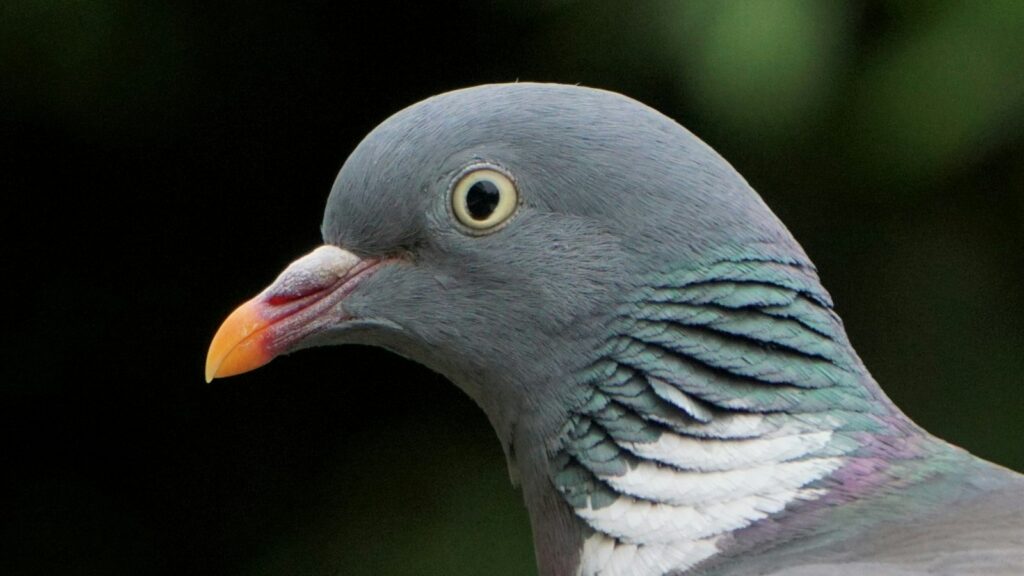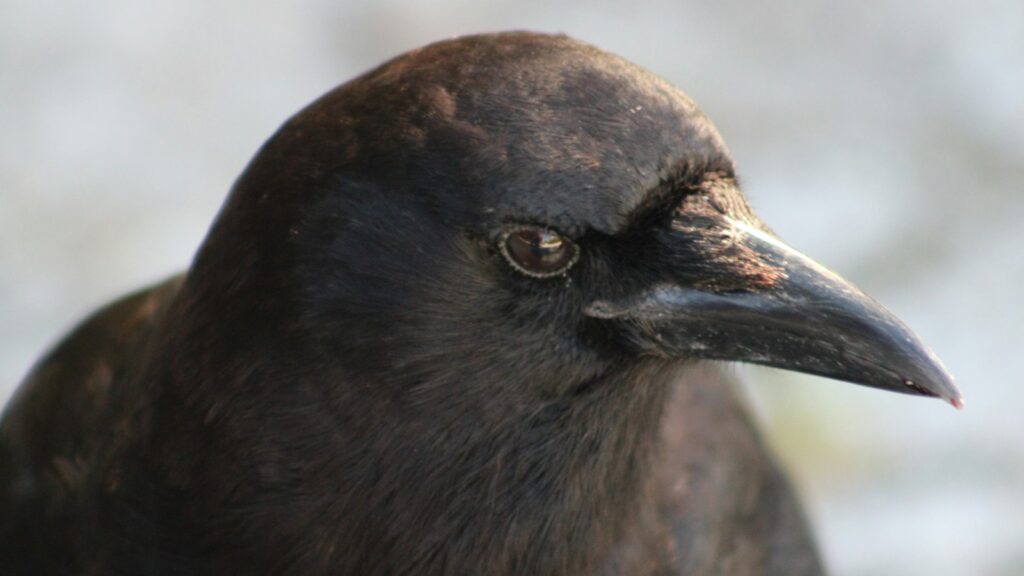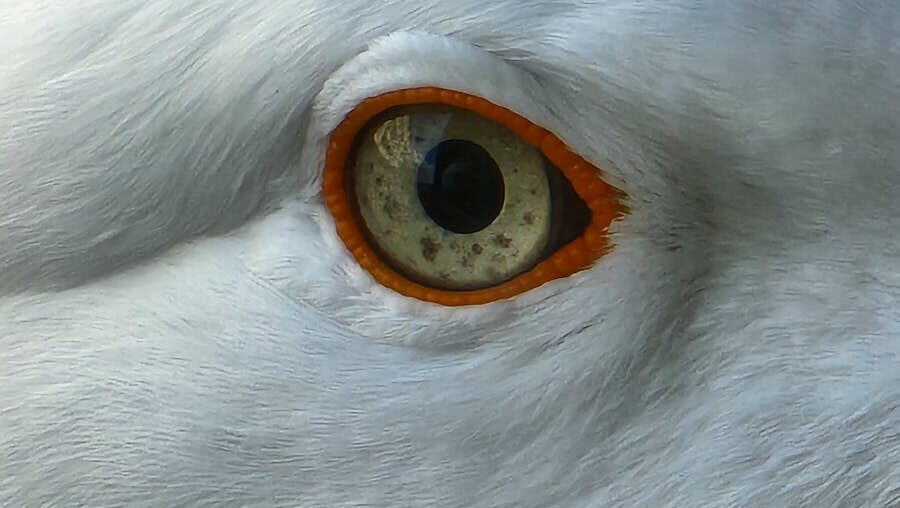Among the many remarkable adaptations that birds have evolved over millions of years, their ability to sense Earth’s magnetic field stands as one of the most extraordinary yet enigmatic capabilities in the animal kingdom. This remarkable skill, known as magnetoreception, enables birds to navigate with astonishing precision during seasonal migrations spanning thousands of miles. Though scientists have been investigating this phenomenon for decades, recent breakthroughs have revolutionized our understanding of how birds perceive magnetic fields. From quantum physics to specialized proteins in their eyes, the mechanisms behind avian magnetoreception represent some of nature’s most sophisticated sensory systems—ones that continue to challenge our understanding of biological sensing capabilities.
The Magnetic Mystery: How Birds Navigate Using Earth’s Magnetic Field

Birds possess an innate ability to detect and orient themselves according to Earth’s magnetic field, a phenomenon first scientifically documented in the 1960s through experiments with European robins. These studies revealed that even when deprived of visual cues like the sun or stars, birds could determine their migratory direction with remarkable accuracy. The Earth’s magnetic field provides birds with both directional information (like a compass) and possibly positional information (like a map). This magnetic sense allows species like the Arctic tern to navigate annual migrations of over 44,000 miles between their Arctic breeding grounds and Antarctic wintering areas, often returning to the exact same nesting sites year after year. What makes this ability particularly fascinating is that humans cannot directly perceive magnetic fields, making it challenging for scientists to understand how birds experience this invisible force.
The Quantum Compass Theory: Radical Pairs in Bird Eyes

One of the most compelling explanations for avian magnetoreception involves quantum mechanics operating within the birds’ visual system. This “radical pair mechanism” suggests that when blue light enters a bird’s eye, it activates a protein called cryptochrome, creating quantum-entangled pairs of electrons that are sensitive to magnetic fields. The orientation of these radical pairs relative to Earth’s magnetic field affects their chemical reactions, potentially creating a visual signal that the bird interprets as directional information. Researchers at the University of Oxford have demonstrated that European robins cannot orient correctly when exposed to specific radio frequencies that disrupt these quantum processes, providing strong evidence for this theory. The radical pair mechanism represents one of the few known examples of quantum effects directly influencing biological processes at the macroscopic level, bridging the gap between quantum physics and animal behavior.
Magnetite-Based Detection: Tiny Compasses in Bird Beaks

A second proposed mechanism for avian magnetoreception involves magnetite, a naturally magnetic iron mineral found in various tissues of birds. Initially, scientists believed that magnetite crystals in birds’ beaks acted like miniature compass needles, physically rotating in response to magnetic fields and triggering nerve signals. Research in pigeons identified magnetite-containing cells connected to the trigeminal nerve, potentially providing magnetic information to the brain. However, more recent studies have challenged the role of beak magnetite, particularly after experiments showed that severing the trigeminal nerve in some bird species did not impair their magnetic navigation abilities. Current evidence suggests that while magnetite may play a role in sensing magnetic intensity or detecting positional information, it likely works in tandem with the radical pair mechanism rather than as the sole explanation for magnetic navigation.
The Visual Component: Seeing Magnetic Fields

Perhaps the most fascinating aspect of avian magnetoreception is the possibility that birds might actually “see” magnetic fields as visual patterns superimposed on their normal vision. Experiments with European robins have shown that their magnetic compass is light-dependent, functioning only when specific wavelengths of light are available. Theoretical models suggest that the radical pair reactions in cryptochromes could create patterns of light and dark, or perhaps colors, in the bird’s visual field that change depending on the bird’s orientation relative to magnetic north. A bird might perceive these patterns as a sort of “heads-up display” guiding its flight direction. Neuroimaging studies have identified increased activity in visual processing regions of birds’ brains when exposed to changing magnetic fields, supporting the idea that magnetoreception is integrated with vision rather than existing as a separate sense.
Cryptochromes: The Proteins Behind Magnetic Sensing

At the molecular level, special proteins called cryptochromes play a crucial role in birds’ ability to detect magnetic fields. These light-sensitive proteins were originally discovered for their role in regulating circadian rhythms but have since been implicated in magnetoreception. When exposed to blue light, cryptochromes undergo conformational changes that create radical pairs—molecules with unpaired electrons whose spin states are affected by magnetic fields. Birds possess several types of cryptochromes, with Cry4 being particularly interesting as its expression remains constant throughout the day and year in migratory birds, unlike other cryptochromes that fluctuate with circadian rhythms. Researchers have identified these proteins in the retinas of migratory birds, specifically in photoreceptor cells that would allow the magnetic information to be processed through visual pathways in the brain.
The Role of Specialized Neurons in Processing Magnetic Information

The detection of magnetic fields is only part of the story—birds must also process this information in their brains to make navigational decisions. Neurobiologists have identified specific regions in avian brains that respond to magnetic stimuli, particularly Cluster N, a region in the forebrain that shows increased activity during magnetic orientation behaviors. This region receives input from the visual system, supporting the theory that magnetic information is processed through visual pathways. Interestingly, Cluster N is more developed in migratory bird species than in non-migratory relatives, suggesting evolutionary specialization for magnetic navigation. Recent studies using miniaturized neural recording devices have even captured the activity of individual neurons that respond specifically to changes in magnetic field direction, providing direct evidence of neural encoding of magnetic information.
Seasonal Changes in Magnetic Sensitivity

Birds’ magnetic sensing abilities undergo remarkable seasonal changes that correlate with their migratory patterns. During migration seasons, the sensitivity of their magnetic compass increases significantly, allowing for more precise navigation during these critical periods. Research has shown that migratory birds experience physiological changes before migration, including increased production of cryptochromes and development of fat reserves that fuel their long journeys. Hormonal changes, particularly increases in melatonin and thyroid hormones, appear to regulate these seasonal adjustments in magnetic sensitivity. Garden warblers, for example, demonstrate measurably higher neural activity in magnetoreception-related brain regions during migratory seasons compared to non-migratory periods, highlighting the dynamic nature of this sensory system that can be upregulated when needed and downregulated to conserve energy during sedentary periods.
Calibration with Other Navigational Cues

While the magnetic sense is remarkable, birds don’t rely solely on magnetoreception for navigation—they integrate multiple sensory inputs to create a comprehensive navigational system. Studies show that birds calibrate their magnetic compass against celestial cues like the sun and stars during development and throughout their lives. Young birds appear to have a critical learning period during which they establish the relationship between magnetic and celestial information, creating a redundant navigational system that allows for accuracy even when some cues are unavailable. Experimental evidence indicates that birds prioritize celestial information at sunset to calibrate their magnetic compass for nighttime navigation, demonstrating a hierarchical arrangement of navigational cues. This multi-modal navigation system provides birds with extraordinary resilience, allowing them to maintain course even in challenging conditions like heavy cloud cover or geomagnetic disturbances.
The Challenge of Anthropogenic Magnetic Interference

As human activities increasingly generate artificial electromagnetic fields, concerns have emerged about potential disruptions to bird migration. Laboratory studies have demonstrated that even weak electromagnetic fields from sources like power lines, radio towers, and urban environments can interfere with birds’ magnetic orientation abilities. During a geomagnetic storm in 1998, racing pigeons across the eastern United States became disoriented, with many failing to return to their home lofts—an event that correlated perfectly with the timing of the magnetic disturbance. More concerning are findings that night-migrating birds show increased disorientation near cell phone towers and in urban areas with electromagnetic pollution, potentially contributing to the billions of birds that die annually from collisions with man-made structures. Conservation efforts now include considerations for electromagnetic interference when designing bird-friendly urban environments and migration corridors.
Evolutionary Origins of Avian Magnetoreception

The magnetic sense in birds represents a fascinating evolutionary adaptation that likely developed over millions of years. Comparative studies across bird species show that magnetoreception is present in both migratory and non-migratory birds, suggesting it evolved before specialized long-distance migration. The common ancestor of modern birds may have used simple magnetic sensing for short-distance orientation, with migratory species later evolving enhanced versions of this system. Cryptochromes, the proteins central to the radical pair mechanism, are ancient molecules found across many organisms, originally evolving for functions related to circadian rhythms and photorepair of DNA damage. Magnetite-based detection systems might represent an even older evolutionary pathway, as magnetotactic bacteria have used similar mechanisms for billions of years to orient along Earth’s magnetic field lines. The convergent evolution of magnetic sensing across diverse animal groups—from birds to sea turtles to certain mammals—underscores the significant navigational advantage this sense provides.
Technological Applications Inspired by Avian Magnetoreception

The remarkable magnetic sensing abilities of birds have inspired scientists to develop new technologies based on these biological systems. Engineers at the University of Tokyo have created artificial magnetoreceptors modeled on the radical pair mechanism, potentially leading to more energy-efficient magnetic sensors for navigation and medical imaging. Quantum physicists are studying bird cryptochromes to better understand quantum coherence at biological temperatures, which defies conventional understanding of quantum effects that typically require extremely cold conditions. Medical researchers are investigating applications for precise drug delivery using magnetic guidance inspired by how birds process magnetic information. Perhaps most intriguingly, the study of avian magnetoreception has contributed to the emerging field of quantum biology, which explores how quantum mechanical effects might influence biological processes from photosynthesis to enzyme function, potentially revolutionizing our understanding of life itself.
Challenges in Studying Magnetic Sensing in Birds

Despite significant advances, researching magnetoreception presents unique challenges that have slowed scientific progress in this field. The inability of humans to perceive magnetic fields makes it difficult to design experiments that accurately reflect how birds experience this sense. Traditional behavioral studies, while valuable, often yield inconsistent results due to the influence of confounding variables like stress, hunger, or other environmental factors on bird behavior. The quantum nature of the radical pair mechanism requires sophisticated equipment and expertise across multiple disciplines including quantum physics, molecular biology, and behavioral ecology—a combination rarely found in a single research team. Perhaps most challenging is the difficulty in non-invasively measuring neural responses to magnetic stimuli in freely moving birds, though recent advances in miniaturized neural recording technology are beginning to overcome this limitation. These challenges explain why, despite over 50 years of research, many aspects of avian magnetoreception remain mysterious.
Future Directions in Magnetoreception Research

The field of avian magnetoreception stands at an exciting frontier, with several promising research directions emerging. Genetic techniques like CRISPR may allow scientists to modify bird cryptochromes and precisely determine their role in magnetic sensing through controlled experiments. Advanced imaging techniques, including specialized MRI protocols sensitive to quantum effects, could potentially visualize the radical pair reactions in living bird retinas in real time. Miniaturized GPS tracking combined with magnetometers and accelerometers are beginning to provide unprecedented data on how wild birds respond to natural variations in Earth’s magnetic field during actual migrations. Perhaps most exciting is the potential to finally resolve the decades-long debate about the relative contributions of the radical pair mechanism versus magnetite-based detection by developing techniques that can selectively disrupt one system while leaving the other intact. As technology advances and cross-disciplinary collaboration increases, we stand poised to unlock the remaining secrets of how birds accomplish one of nature’s most remarkable sensory feats.
Conclusion

The extraordinary ability of birds to sense and navigate using Earth’s magnetic field represents one of nature’s most sophisticated sensory systems—a biological technology millions of years in the making that still surpasses human engineering in many respects. From quantum effects in their eyes to specialized neural pathways in their brains, birds have evolved multiple mechanisms that work in concert to detect magnetic information invisible to humans. As research techniques continue to advance, each new discovery about avian magnetoreception not only enhances our understanding of these remarkable creatures but also inspires technological innovations across disciplines from medicine to navigation. Perhaps most importantly, understanding how birds perceive magnetic fields may prove crucial for their conservation in a world increasingly filled with anthropogenic electromagnetic interference, ensuring that the ancient pathways of migration continue for generations to come.
